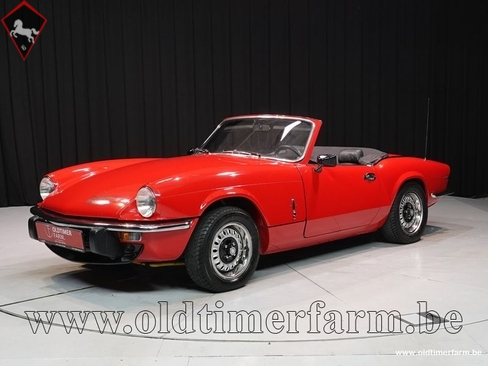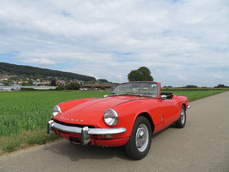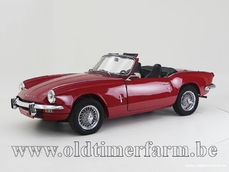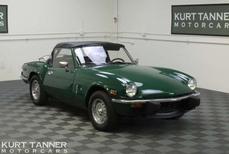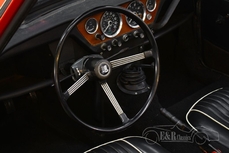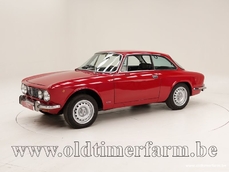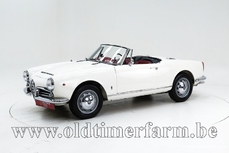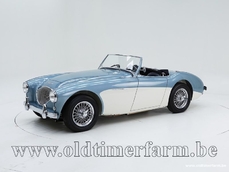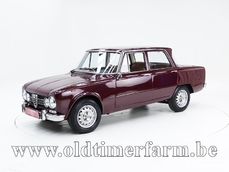Triumph Spitfire 1500 '80 1980
General description :
Fully restored Spitfire 1500 Newly delivered in Belgium Nice restoration report Sports exhaust, sound system, leather, wooden dashboard, gear lever, wheels and pedal rubbers are original In September 1960 Triumph started developing a new two-seat prototype for the first time. The basis of this design was the 948cc engine and chassis of the Triumph Herald that had been on the market for some time. The design – by the Italian designer Giovanni Michelotti – took place in Turin and was known as 'The bomb'. From the beginning it looked like the later production model that was sold under the name Triumph Spitfire. In 1961 Triumph was acquired by the Leyland Motors company. During the company takeover, the development of 'The bomb' was halted, but after approval by the new management, it was decided to continue production. The Triumph Spitfire, as the car was now called, was built on a separate and 21 cm shortened Triumph Herald chassis without raised sides. This immediately made the car a lot lower. The Triumph Herald was negatively known for its handling; this was because the chassis parts were still bolted together. That is why the chassis of the Spitfire was fully welded. It was also decided to weld all body parts completely. The entire body was then secured to the chassis with only 12 bolts. The Spitfire 1500 was launched 2 years before the end of MkIV production. Triumph already carried the 1493 cc engine with a single Zenith Stromberg carburetor in the MkIV's for the (U.S.) export market. However, due to a change in the law for the American emission values, the power of these engines was reduced to such an extent that a larger engine really became necessary. Technical data Bodywork Length (cm): 378 Width(cm): 149 Height (cm) : 121 Wheelbase (cm) : 211 Weight (kg) : 800 Mechanism Engine : 4 cylinder in line 1493 cc, front Valves : 8 Fuel system : 2 SU carburetors Gearbox : manual, 4 speed Transmission : at the rear wheels Send : left Maximum power : 71 hp (52 kW) at 5500 rpm Maximum torque : 111 Nm at 3000 rpm Top speed : 161 km/h
http://www.oldtimerfarm.be/en/collection-cars-for-sale/6549/triumph-spitfire-1500-80.php
1980 Triumph Spitfire 1500 '80 is listed sold on ClassicDigest in Aalter by Oldtimerfarm Dealer for €15950.
Car Facts
Car type : Car Make : Triumph Model : Spitfire Model Version : 1500 '80 Engine size : 0.0 Model Year : 1980 Location : Aalter
Sold
Seller Information
Sold
People who viewed this Triumph Spitfire also viewed similar Triumph listed at ClassicDigest
Other cars listed for sale by this dealer
About Triumph
Triumph, a name synonymous with classic sports cars and innovative designs, has a rich and storied history in the automotive world.The Triumph story began in the late 19th century when the company originally produced bicycles and then expanded into motorcycles. However, it was in the 1920s that Triumph ventured into the production of automobiles. Over the years, Triumph became renowned for its high-quality vehicles that combined performance with style.
One of Triumph's most iconic models was the TR3, introduced in the late 1950s. It was a classic British sports car, loved for its simple yet elegant design and thrilling driving experience. The TR3 was a symbol of affordable sports car enjoyment, and it set the stage for a series of successful TR models, including the TR4, TR5, and TR6.
In addition to sports cars, Triumph made a name for itself with Michelotti-designed sedans. The Triumph Herald, introduced in the early 1960s, was a compact family car that boasted stylish design and solid engineering. Later on, the Triumph 2000 and 2500 sedans catered to a more upscale market and earned a reputation for their comfortable rides and elegant looks.
However, despite its successes, Triumph faced numerous challenges over the years, including financial difficulties and ownership changes. In the 1980s, British Leyland, the company that owned Triumph, underwent significant restructuring, and the Triumph brand was gradually phased out.
The demise of Triumph was indeed sad and, to some extent, disgraceful. The company that had produced beloved sports cars and well-regarded sedans was slowly fading away. In 1984, the last Triumph-badged car rolled off the production line, marking the end of an era.
Although the Triumph name disappeared, its legacy lives on. Enthusiasts and collectors continue to cherish classic Triumph sports cars like the TR3, TR6, and Spitfire, as well as the unique charm of Triumph sedans. Triumph remains a symbol of British automotive heritage and the enduring appeal of classic sports cars.
In conclusion, Triumph's history is a blend of classic sports car excellence and innovative sedan design. Its sad and disgraceful demise serves as a reminder of the challenges faced by many automakers over the years, but the spirit of Triumph lives on in the hearts of automotive enthusiasts around the world.
